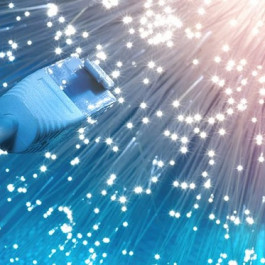In the last blog, we introduced PON. Today, I am going to introduce the FTTx.
FTTx is the abbreviation of “Fiber to the X”, which means “fiber to x”, which is a general term for various fiber-optic communication networks, where X represents the destination of the fiber-optic line.
The FTTx network applications in GPON access have the following in common: The data, voice, and video signals of terminal users are sent to ONUs, where the signals are converted into Ethernet packets and then transmitted over optical fibers to the OLT using the GPON uplink ports on the ONUs. Then, the Ethernet packets are forwarded to the upper-layer IP network using the uplink port on the OLT.
How many types of the FTTx?
FTTx has these types:
FTTB/FTTC (Fiber To The Building): The OLT is connected to ONUs in corridors (FTTB) or by the curb (FTTC) using an optical distribution network (ODN). The ONUs are then connected to user terminals using xDSL. FTTB/FTTC is applicable to densely-populated residential communities or office buildings. In this scenario, FTTB/FTTC provides services of certain bandwidth for common users.
FTTD (Fiber To The Desktop): uses existing access media at user homes to resolve drop fiber issues in FTTH scenarios.
FTTH (Fiber To The Home): The OLT connects to ONTs at user homes using an ODN network. FTTH is applicable to new apartments or villas in loose distribution. In this scenario, FTTH provides services of higher bandwidth for high-end users.
FTTO (Fiber To The Office ): The OLT is connected to enterprise ONUs using an ODN network. The ONUs are connected to user terminals using FE, POTS, or Wi-Fi. QinQ VLAN encapsulation is implemented on the ONUs and the OLT. In this way, transparent and secure data channels can be set up between the enterprise private networks located at different places, and therefore the service data and BPDUs between the enterprise private networks can be transparently transmitted over the public network. FTTO is applicable to enterprise networks. In this scenario, FTTO implements TDM PBX, IP PBX, and private line service in the enterprise intranets.
FTTZ (Fiber To The Zone): refers to the fiber to the cell. The FTTx technology is mainly used to access the network fiber, ranging from the central office equipment of the regional telecommunications room to the user terminal equipment. The central office equipment is the optical line terminal (OLT) and the customer equipment is the optical network unit (Optical Network). Unit; ONU) or Optical Network Terminal (ONT).
FTTF (Fiber-To-The-Frontage): This is very similar to FTTB. In a fiber to the front yard scenario, each fiber node serves a single subscriber. This allows for multi-gigabit speeds using XG-fast technology. The fiber node may be reverse-powered by the subscriber modem.

Fiber to the home (FTTH) is the technical direction that people have been pursuing for 20 years. However, due to obstacles in cost, technology and demand, it has not been widely promoted and developed. Because of this, many people of insight regard FTTx (especially fiber-to-the-home, fiber-to-the-resident) as an important turning point in the recovery of the optical communications market. And it is expected that the FTTH network will have greater development in the next few years.
Do you have different ideas? Leave your comments.
Learn more:
PON: EPON vs. GPON vs. 10G-PON
OLT Device Introduction: Huawei SmartAX EA5800 Series
What is ONT GPON: OLT vs. ONU vs. ONT & Huawei ONT



